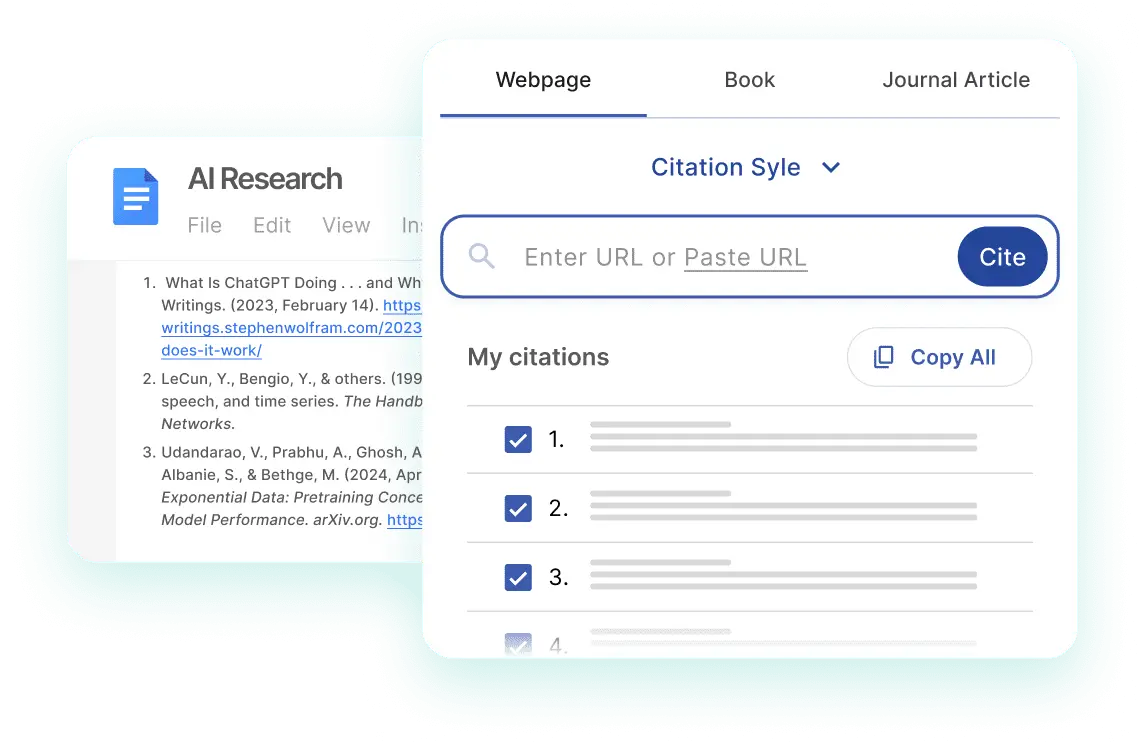Uncover Land Change Insights
Discover valuable insights through our literature review on land use and land cover change.
Try Justdone
Maximize Land Knowledge
Deep Analysis
Gain in-depth understanding of land use and cover change patterns for informed decisions.
Expert Curation
Access curated literature for comprehensive insights on land change dynamics and trends.
Actionable Findings
Discover actionable findings to drive effective strategies for land use and cover changes.
Literature Review Land Use Land Cover Change
Comprehensive Analysis
A literature review on land use land cover change provides a comprehensive analysis of the historical and current trends in the transformation of natural landscapes due to human activities. It offers valuable insights into the drivers, impacts, and implications of these changes, contributing to a deeper understanding of environmental dynamics.
Understanding the historical evolution of land use and land cover changes enables the identification of patterns, causes, and consequences, which is crucial for effective land management and policy development. By synthesizing existing research, a literature review facilitates the identification of gaps and emerging trends, providing a foundation for future studies and interventions. It also aids in assessing the effectiveness of current land use policies and practices in addressing environmental challenges.
Try Justdone ->
Informed Decision-Making
By examining a wide range of scholarly works, a literature review equips researchers, policymakers, and land managers with a comprehensive understanding of the complex interactions between human activities and the environment. This knowledge is essential for making informed decisions related to sustainable land use and conservation strategies.
The insights gained from a literature review can support evidence-based decision-making processes, guiding the development of initiatives aimed at mitigating the adverse effects of land use changes and promoting ecological resilience. Furthermore, it assists in identifying potential trade-offs and synergies between different land uses, guiding the allocation of resources and efforts towards achieving balanced and sustainable land management practices.
Try Justdone ->
Interdisciplinary Insights
A literature review on land use land cover change integrates findings from diverse disciplines such as geography, ecology, sociology, and economics. This interdisciplinary approach provides a holistic perspective on the multifaceted aspects of land transformations, offering valuable insights into the social, economic, and environmental dimensions of land use changes.
By synthesizing knowledge from various fields, a literature review fosters a comprehensive understanding of the complex interplay between human societies and natural ecosystems. This cross-disciplinary insight is instrumental in addressing the challenges posed by land use changes, promoting integrated approaches that consider ecological, social, and economic aspects for sustainable land management.
Try Justdone ->
Effective Strategies for Literature Review
Thematic Analysis Approach
When conducting a literature review on land use land cover change, consider employing a thematic analysis approach to identify recurring themes, patterns, and gaps in existing research. This method enables the synthesis of diverse perspectives and facilitates the exploration of interconnected themes related to land transformations and their implications.
Utilize specialized databases and scholarly repositories to access a wide range of peer-reviewed articles, research papers, and reports focused on land use land cover change. By leveraging these resources, you can gain comprehensive insights into the evolving discourse on land transformations and access current and historical literature relevant to your research.
Critical Evaluation of Sources
Engage in a critical evaluation of the sources accessed during the literature review process, assessing the credibility, relevance, and methodological robustness of the included studies. This practice ensures the integration of high-quality and reliable information, enhancing the validity and rigor of the synthesized findings.
Consider the temporal and spatial dimensions of land use land cover change in the reviewed literature, acknowledging regional variations, temporal trends, and the implications of different land management practices. This contextual understanding enriches the analysis and contributes to a nuanced interpretation of the research landscape.
Synthesis of Emerging Perspectives
Highlight emerging perspectives and innovative approaches in addressing land use land cover change, emphasizing the integration of sustainable development goals, climate change adaptation strategies, and community-based conservation initiatives. By synthesizing emerging perspectives, you can contribute to the advancement of progressive solutions and transformative interventions.
Seek opportunities to engage with diverse stakeholders, including researchers, practitioners, and local communities, to gather insights and perspectives on the dynamic challenges and opportunities related to land transformations. This participatory approach enriches the literature review with diverse voices and fosters a more inclusive representation of the issues at hand.
Integration of Geospatial Analysis
Integrate geospatial analysis and remote sensing techniques into the literature review process to elucidate spatial patterns, trends, and drivers of land use land cover change. By incorporating geospatial data and satellite imagery, you can enhance the visualization of landscape dynamics and facilitate a spatially-informed understanding of land transformations.
Explore the integration of geographic information systems (GIS) and geospatial modeling approaches to analyze the spatial-temporal dynamics of land use changes, enabling the identification of hotspots, transition zones, and areas vulnerable to environmental degradation. This spatial perspective adds depth to the literature review, enriching the analysis with geospatial insights.
Ethical Considerations in Research
Acknowledge and address ethical considerations in the reviewed literature, particularly in studies related to land use changes, conservation practices, and community impacts. Highlight the ethical frameworks, principles of environmental justice, and considerations of indigenous knowledge and rights in the context of land use land cover change, contributing to a more ethically-informed discourse.
Reflect on the potential ethical implications of land use decisions, policy interventions, and research methodologies, emphasizing the need for ethical reflexivity and responsible engagement with diverse perspectives. By integrating ethical considerations, the literature review contributes to a more inclusive and ethically-grounded exploration of land transformations.
Exploring Land Use Land Cover Change
Discover diverse perspectives and insights on land use land cover change through interactive exploration and thematic analysis.
Explore the thematic patterns and interdisciplinary insights related to land use land cover change.
In the exploration of thematic patterns and interdisciplinary insights related to land use land cover change, it is essential to employ a comprehensive thematic analysis approach that captures the multifaceted dimensions of landscape transformations. By synthesizing diverse perspectives from disciplines such as geography, ecology, and sociology, the thematic analysis unveils interconnected themes and drivers of land use changes, fostering a holistic understanding of the complex dynamics at play.
Utilize specialized databases and scholarly repositories to access a wide array of peer-reviewed literature, research articles, and reports addressing land use land cover change. Leveraging these resources enriches the thematic analysis by integrating diverse scholarly perspectives, historical trends, and emerging discourse on sustainable land management practices. The thematic analysis approach facilitates the identification of recurring themes, gaps, and innovative approaches, contributing to a comprehensive synthesis of the evolving landscape dynamics.
Engage in a critical evaluation of the sources accessed during the thematic analysis, ensuring the integration of high-quality and relevant information that underpins the synthesized insights. By critically evaluating the credibility, methodological robustness, and contextual relevance of the included studies, the thematic analysis approach enhances the validity and rigor of the synthesized findings, guiding the exploration of emerging perspectives on land use land cover change.
Highlight emerging perspectives and innovative strategies in addressing land use land cover change, emphasizing the integration of sustainable development goals, climate change adaptation, and community-based conservation initiatives. The thematic analysis enables the synthesis of progressive solutions and transformative interventions, contributing to the advancement of inclusive and sustainable land management practices. By engaging with diverse stakeholders, including researchers and practitioners, the thematic analysis enriches the exploration with diverse voices and perspectives on the dynamic challenges and opportunities related to land transformations.
Integrate geospatial analysis and remote sensing techniques into the thematic analysis process to elucidate spatial patterns, trends, and drivers of land use land cover change. By incorporating geospatial data and satellite imagery, the thematic analysis enhances the visualization of landscape dynamics and facilitates a spatially-informed understanding of land transformations. The integration of geographic information systems (GIS) and geospatial modeling approaches enriches the thematic analysis with spatial insights, contributing to a more comprehensive exploration of the spatial-temporal dynamics of land use changes.
Acknowledge and address ethical considerations in the thematic analysis, particularly in studies related to land use changes, conservation practices, and community impacts. Reflect on ethical frameworks, principles of environmental justice, and considerations of indigenous knowledge and rights in the context of land use land cover change, contributing to a more ethically-informed exploration. By integrating ethical considerations, the thematic analysis fosters a more inclusive and ethically-grounded representation of the multifaceted landscape transformations.
Engage in interactive exploration to gain diverse insights on land use land cover change from different perspectives.
The interactive exploration of land use land cover change offers a dynamic platform to gain diverse insights from different perspectives, engaging with interactive tools and resources that facilitate the exploration of landscape transformations. By participating in interactive thematic analysis, users can uncover interconnected themes, emerging trends, and interdisciplinary insights related to land use changes, fostering a deeper understanding of the complex dynamics shaping natural landscapes.
Utilize interactive mapping tools and geospatial visualizations to interactively explore the spatial-temporal dynamics of land use land cover change, gaining a nuanced understanding of the drivers, impacts, and implications of landscape transformations. The interactive exploration enhances the visualization of landscape patterns, facilitating a spatially-informed exploration that elucidates the spatial distribution of land use changes and the associated environmental and social consequences.
Engage in collaborative discussions and knowledge sharing within interactive platforms, connecting with researchers, practitioners, and community members to exchange insights, perspectives, and innovative strategies for addressing land use land cover change. The interactive exploration fosters a participatory approach, integrating diverse voices and expertise to enrich the exploration with inclusive and collaborative perspectives on sustainable land management practices and conservation initiatives.
Highlight the interconnections between land use changes, biodiversity conservation, and ecosystem services through interactive exploration, emphasizing the reciprocal relationships between human activities and ecological dynamics. The interactive exploration provides a platform to explore the complex interactions between land transformations and biodiversity conservation efforts, guiding the identification of synergies and trade-offs in land management practices and policy interventions.
Acknowledge and address ethical considerations within the interactive exploration, emphasizing the principles of environmental justice, ethical engagement with diverse stakeholders, and the integration of indigenous perspectives and knowledge in the discourse on land use land cover change. By fostering ethical reflexivity and responsible engagement, the interactive exploration enriches the exploration with a more ethical and inclusive representation of the multifaceted landscape transformations.